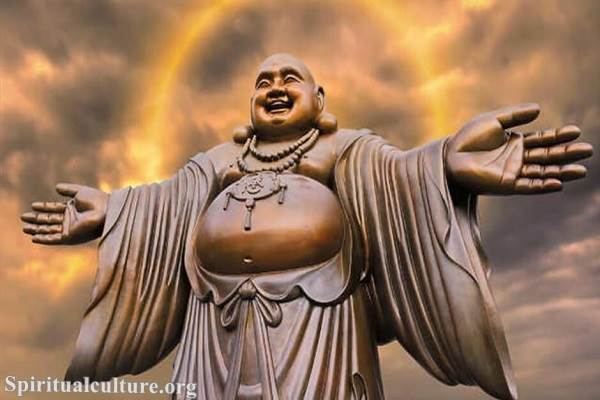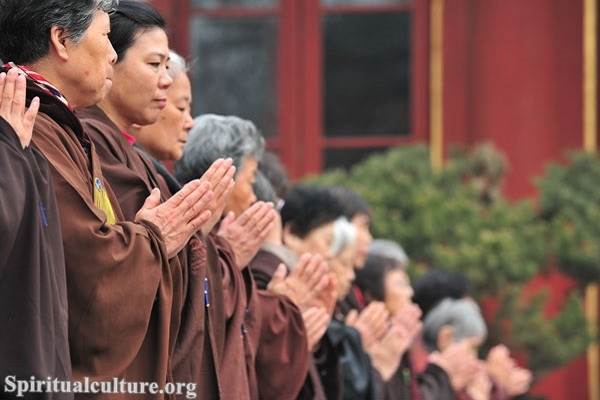In a world of endless noise and distraction, many souls are quietly searching for stillness — for a way to be truly present, calm, and kind. Beneath the whirlwind of doing, achieving, and becoming, lies a sacred invitation to simply be.
Spiritual Culture invites you now to explore a timeless path, one that has guided millions for centuries — the path of Buddhist mindfulness in daily life.
More than a meditation technique or trendy self-help tip, mindfulness in the Buddhist tradition is a deep spiritual practice. It is not an escape from life, but an awakening within it. This article will explore what Buddhist mindfulness truly is, how it’s practiced throughout daily life, and why it remains one of the most transformative ways to live with awareness, wisdom, and compassion.
The Heart of Mindfulness in Buddhism
Mindfulness as “Sati”: Remembering to Be Aware
The Pali word “sati”, commonly translated as mindfulness, literally means “to remember” — but not memory in the usual sense. It means to remember the present, to not forget what is happening right now.
In the Buddhist context, mindfulness is a form of clear, non-judgmental awareness of body, feelings, thoughts, and phenomena. It’s not spacing out. It’s tuning in — fully and wisely.
As the Buddha taught in the Satipatthana Sutta (The Discourse on the Foundations of Mindfulness):
“This is the direct path for the purification of beings… for the realization of Nirvana — namely, the four foundations of mindfulness.”
(DN 22)
These four foundations are:
- Mindfulness of the body
- Mindfulness of feelings
- Mindfulness of the mind
- Mindfulness of mental objects (dhammas)
Each one helps us see clearly — and live gently — from moment to moment.
Mindfulness Begins in the Body
Breathing, Walking, Eating with Presence
Mindfulness in daily life often begins with the body — because the body is always in the present.
When you breathe mindfully, you come home to the now:
“Breathing in, I know I am breathing in. Breathing out, I know I am breathing out.”
– Thich Nhat Hanh
When you walk mindfully, each step becomes a prayer. When you eat mindfully, each bite becomes a blessing.
The body is not just a vessel; it is a sacred temple where awareness is born.
Watching the Mind Without Clinging
Feelings and Thoughts Arise, But We Are Not Them
Mindfulness teaches us to observe without becoming entangled. A thought arises: we see it, acknowledge it, let it go. A feeling swells: we notice it, name it, hold it with compassion.
“In seeing, there is only the seen. In hearing, only the heard.”
– Bahiya Sutta, Ud 1.10
This radical simplicity cuts through delusion. We discover we are not our thoughts. We are not our anxiety, our anger, or even our story. We are awareness itself — spacious, kind, and free.
Daily Life as the Dojo of Mindfulness
Every Chore a Chance to Wake Up
Unlike many philosophies that separate the spiritual from the secular, Buddhist mindfulness infuses the ordinary with the sacred. Washing dishes, folding laundry, answering emails — each act becomes a training ground.
In Zen, there’s a saying:
“When walking, just walk. When eating, just eat.”
Mindfulness is not multitasking. It is uni-tasking with presence. When practiced with heart, even the simplest acts become rich with grace.
The Three Characteristics of Existence
Impermanence, Non-Self, and Suffering as Lenses for Clarity
Buddhist mindfulness is not merely being aware of the surface of things. It means seeing deeply into the nature of reality, especially the three marks:
- Anicca (impermanence) – All things change
- Dukkha (suffering or unsatisfactoriness) – Clinging causes distress
- Anatta (non-self) – No permanent, unchanging self
When we remember these truths in daily life — when someone cuts us off in traffic, or when a loved one is ill — we respond not with panic or pride, but with insight. We soften. We see.
Mindfulness and Ethical Living
Awareness Leads to Right Action
Mindfulness is not morally neutral. In Buddhism, it is always connected to the path of wisdom and compassion.
True mindfulness leads to ethical living — because when we are deeply present, we cannot harm others without harming ourselves.
As part of the Noble Eightfold Path, mindfulness (samma sati) is tied to:
- Right view
- Right intention
- Right speech
- Right action
- Right livelihood
Thus, to be mindful is to live in a way that brings peace to oneself and others.
Cultivating Loving Awareness
Mindfulness and Metta (Loving-Kindness)
Mindfulness can be firm and clear. But it is also deeply tender. It holds experience like a mother holds a crying child.
This is where metta (loving-kindness) and mindfulness merge. When we are present without judgment, compassion naturally arises. We see the pain in others. We soften toward our own wounds.
One does not need to chant mantras or wear robes to be a practitioner. One needs only to bring a kind, awake attention to this moment.
Obstacles to Mindfulness in Modern Life
Distraction, Speed, and the Myth of Busyness
Modern life pulls us away from presence. Constant notifications, endless to-do lists, and societal pressure to “do more” distract us from being here now.
Mindfulness in daily life means choosing depth over distraction, even if only for a moment — to pause before reacting, to breathe before speaking, to look into someone’s eyes without looking at a screen.
This countercultural act of stillness becomes an inner revolution.
Daily Practices to Deepen Your Mindfulness
Simple Ways to Begin, Sustain, and Expand
- Morning silence: Start your day with 5 minutes of breath awareness before reaching for your phone.
- Mindful tea/coffee: Drink slowly, feel the warmth, smell the aroma, breathe between sips.
- One mindful meal a day: Eat in silence, with gratitude and no distractions.
- Mindful transitions: Walking from room to room? Pause. Breathe. Be here.
- Gratitude pause at bedtime: Reflect on three moments you were truly present today.
Each act is a seed. Watered with attention, it blooms into transformation.
Mindfulness Is Not Perfection
It Is Returning, Again and Again
Many people give up on mindfulness because they “can’t stay present.” But mindfulness is not about never drifting — it’s about noticing when we’ve drifted, and gently returning.
Even the Buddha didn’t promise that the mind would always be still. He promised we could meet our minds with compassion.
“Just as a mother would protect her only child with her life… so with a boundless heart should one cherish all living beings.”
– Metta Sutta, Snp 1.8
Mindfulness is a return to love — over and over.
Reflect and Reimagine
What if your next breath was sacred? What if each step was a blessing?
Buddhist mindfulness in daily life is not reserved for temples and retreats. It is here, in this moment — as close as your own heartbeat.
To live mindfully is to live truthfully. To live truthfully is to live freely. And to live freely is to live with love.
As Spiritual Culture, we invite you:
Pause.
Breathe.
Be here.
And remember — this moment matters.
Let your life become the practice. Let your presence become the gift.



